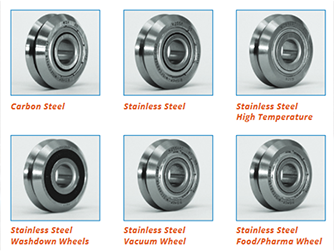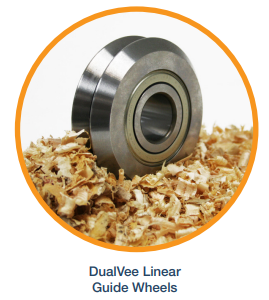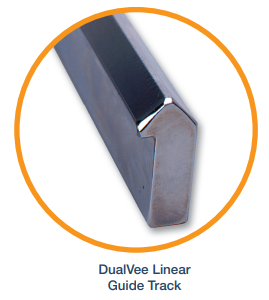
Ask a Bishop-Wisecarver Engineer:
How do I choose which material is best when selecting linear guide wheels and track?
Alex's Answer:
Isn’t it great to have options? The DualVee wheels and track have different materials because we’ve found which ones work best in each environment. It’s important to know the benefits of each so I will break those down. It might look long, but stick with me as it is a quick read - and an important one as it impacts the success of your motion solution.


Linear Guide Wheels
Wheels are available in a variety of materials to suit a wide range of applications and the most commonly used materials are AISI 440C stainless steel, 52100 carbon steel, and polymer. Let’s look at these three:
Stainless steel materials should be used in humid, liquid and corrosive environments. Although highly corrosion resistant, some corrosion can occur with stainless steel depending on the severity of the environment. AISI 440C stainless wheels are hardened to reduce abrasion and extend their lifespan.
Carbon steel materials are intended for general purpose use and are also hardened to reduce abrasion and extend their lifespan. They are suitable for most applications and are an economical solution.
Polymer wheels offer certain benefits including chemical resistance, low friction, and low noise. Polymer wheels have a reduced load performance versus steel wheels, but polymer wheels provide an economical choice for light load applications and harsh chemical environments.


Linear Guide Track
Standard track materials include AISI 1045 carbon steel and AISI 420 stainless steel. Other track materials include aluminum, which can be used with polymer guide wheels. The 1045 is a medium carbon steel with good strength and hardness properties of 53 HRC (22-25 HRC unhardened), which minimizes wear. The 420 stainless steel contains just enough chromium to limit corrosion, yet can be hardened up to 45 HRC (20-22 HRC unhardened.)
Stainless or carbon steel tracks are equally effective in environments with heavy concentrations of large particulates and flakes, because contaminants are swept away when the wheel passes over the track. Since the wheel has a smaller diameter at its inner vee compared to its outer vee, the wheel’s inner vee travels at a slower rate than the outer vee on the track, causing a velocity gradient that pushes the debris outward, resulting in especially clean track.
When selecting the track material, we advise not specifying a material softer than the wheel material. This can result in the track material galling onto the wheel, damaging the track, wheel and payload, requiring time-consuming and expensive repairs to be made to the assembled system. However, a notable exception to this rule is that it is acceptable to use hardened steel track material with steel wheels despite the track having marginally less hardness than the wheels.
Go to www.bwc.com for more details on our innovative motion solutions that thrive in harsh and extreme conditions. Contact Alex and the application engineering team at AE@bwc.com with your questions.


Engineer and product manager at Bishop-Wisecarver, Alex Marques, answers your industrial motion questions.

